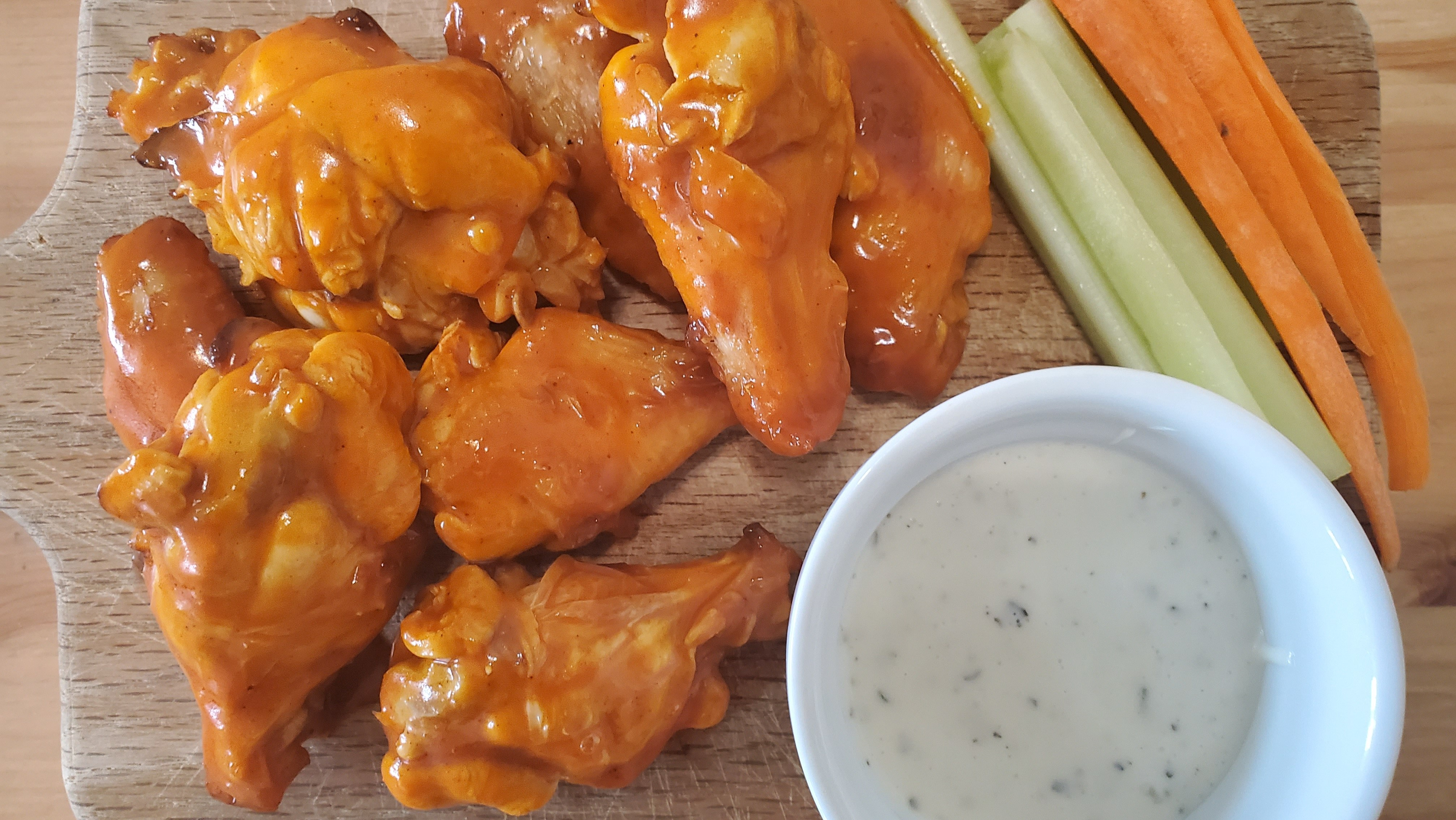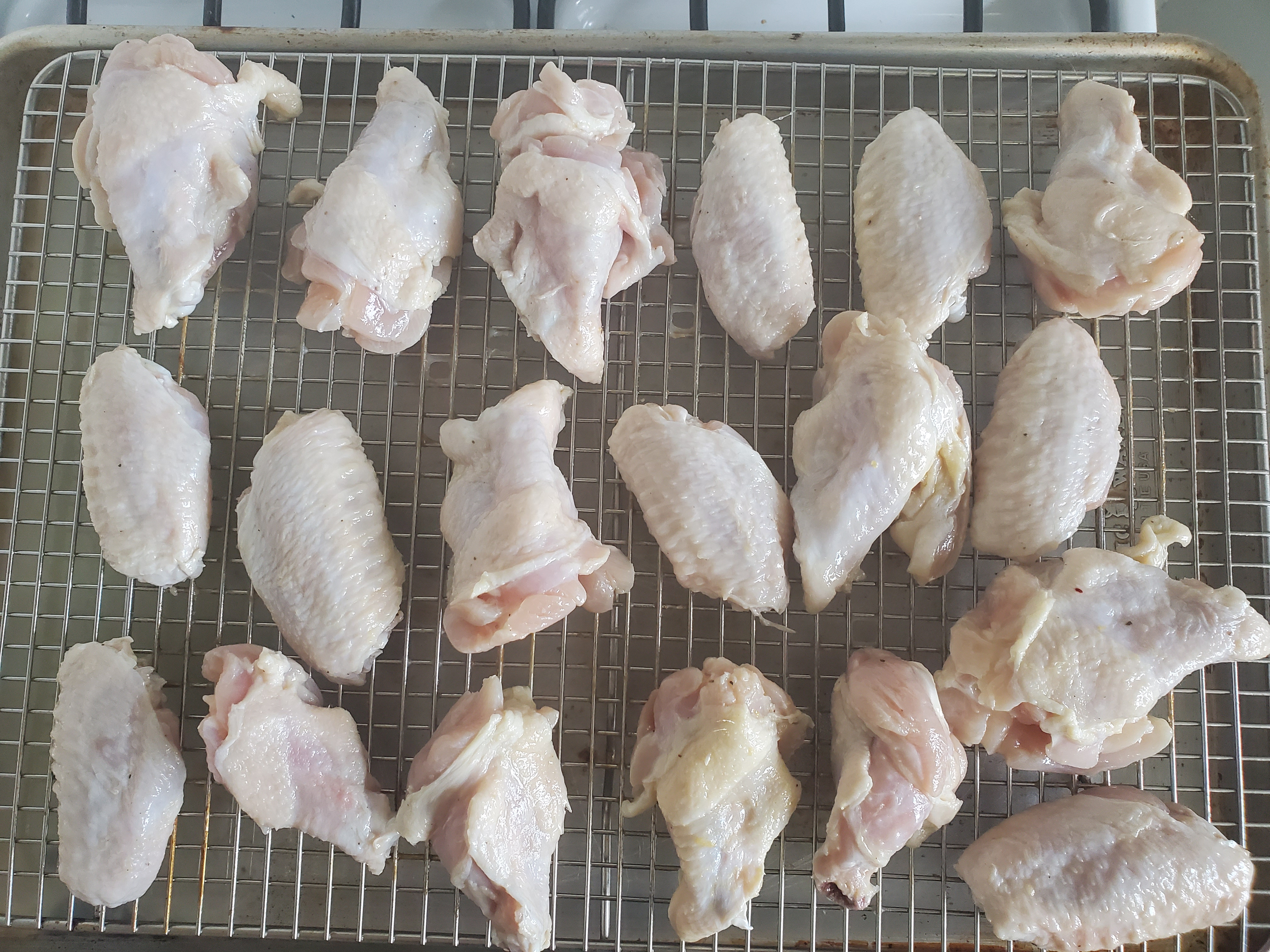Don't Fry This At Home: Baked Chicken Wings Are Just As Good
Whenever I eat a dry chicken wing I think, How did you guys fuck this up? Rough exterior, scorched center gasping for air, the tangy sauce not enough to mask the unpleasantness of tough meat and burnt skin. I would have been better off doing this myself, I think. But that's the problem: Deep-frying anything at home can be a pain in the ass. I live in a studio apartment in Thai Town; I can't burden my meager stove with a giant pot of hot oil.
Also, it wouldn't feel right. Some food is just meant to be eaten out —bar foods belong in a bar. There's a reason nobody has any fond memories of Meemaw making jalapeno poppers. Ahhhh, sliders and onion rings, just like the old country! French fries, mozzarella sticks, wings: These are all items that you can get easier and likely better at a restaurant, because they have the infrastructure for deep-frying that you'll never have. All that said, if you're dying to cook wings at home, there's a way to do it that will get you awfully close to the crispy, restaurant-quality experience, and that's brining and baking on high heat.
The best wing I've had? It's hard to qualify, but I know that Gabriel's Gate in Buffalo, New York is up there. I've been to Buffalo five or six times to do Helium comedy club, and every time locals would pimp out Gabriel's Gate (while also insisting that Anchor Bar was overrated). Bon Appétit recently caught on to the Gate, too, and I would love to state for the record that Alton Brown was wrong when he said, "If you really want great Buffalo chicken wings, you don't go to frickin' Buffalo." What I'm particularly impressed with is how there's never a remotely dry wing in the bunch. They're always juicy and tender. Maybe the meat's fresher, maybe it has to do with the temperature of the fryer, but the only way I know how to achieve that tenderness is through brining.
Brining chicken is like giving the meat an internal basting that there's really no substitute for. This is ideal for wings, which can dry out rather easily. Combine that with an oven blasted on 400 degrees, and you're on your way to achieving a crispy skin with a juicy center. No, it won't be a complete dead ringer for something that spent time in a commercial deep fryer, but you're going to make a damn good wing, and one where you can actually taste chicken under the skin. No flying hot oil required.
The Brine
This is for roughly 2-2 1/2 pounds of store-bought chicken wings (drums and flats).
- 10 cups cold water
- 3/4 cup salt
- 4 bay leaves
- 5 cloves garlic, crushed but not peeled
- 2 Tbsp. honey
- 1 lemon, squeezed and zested
- 1 Tbsp. peppercorns
Using a big pot, combine the 5 cups of water and the above ingredients. Put on medium heat and continue stirring until the salt is dissolved. Bring it to a simmer, then turn the heat off and let cool. Once it's completely cooled, add the other 5 cups of water and stir. Now add the wings, making sure they're completely submerged, and wrap the pot tightly in plastic wrap. Let stand in the fridge overnight.
The next day, strain the pot of wings and brine through a large strainer. A lot of people say to rinse the meat under cold water after brining, but I don't quite understand that. Me? I don't rinse because I want the flavors intact. I want the peppercorn and lemon and garlic slightly present. I don't want to rinse off the sugar from the honey because it certainly couldn't hurt carmelization, and after all, we do want a crispy wing. The thought behind rinsing the meat post-brine is that it also removes the salt from the skin. Not rinsing the brine can sometimes lead to a salty wing—but there isn't an incredible amount of salt in this brine. We all taste salt a little differently, though, so if you're worried about that, go ahead and give it a quick rinse. Pick off any peppercorns or pieces of garlic. Then, I like to lay my wings out on a wire rack atop a sheet pan, like so.
Pat them down with a paper towel, and stick them back in the fridge to air dry. Air drying is a key part of brining. You can pat the wings down all you want, but the air circulation in the fridge does wonders for drying out the skin post-brine. The wire rack helps air out the whole wing, and when you bake in the oven, the juices will drop to the pan insuring the bottom of the wing doesn't get soggy. Remember: Juicy interior, crispy skin.
The Wings
Set an oven to 400 degrees and place a rack near the top of the oven. Don't toss the wings in oil, salt, or anything. They should contain enough salt from the brine, and the oil will just cause the oven to smoke. Bake for 30-35 minutes. Test with a thermometer: 165 degrees Fahrenheit is the target temperature for chicken, but don't worry if it's a few degrees higher. I've found it's really hard to overcook these things when brined.
The Sauce
- 3/4 cup Frank's Red Hot
- 3 Tbsp. butter
- Fresh pepper
Frank's and butter, right? I don't know if you really need anything else for the most basic of wing sauces. However, I do like to turn the pepper mill a few times when the sauce finishes. Treat buffalo sauce like a sauce—bring the Frank's to a decent temperature on moderate heat in a large saute pan, then slowly add in the butter a tablespoon at a time, swirling around the pan like you would emulsify a traditional beurre blanc. When the butter has dissolved, dump the oven-baked wings in the pan and toss. Flick the wrist like it's pasta.

